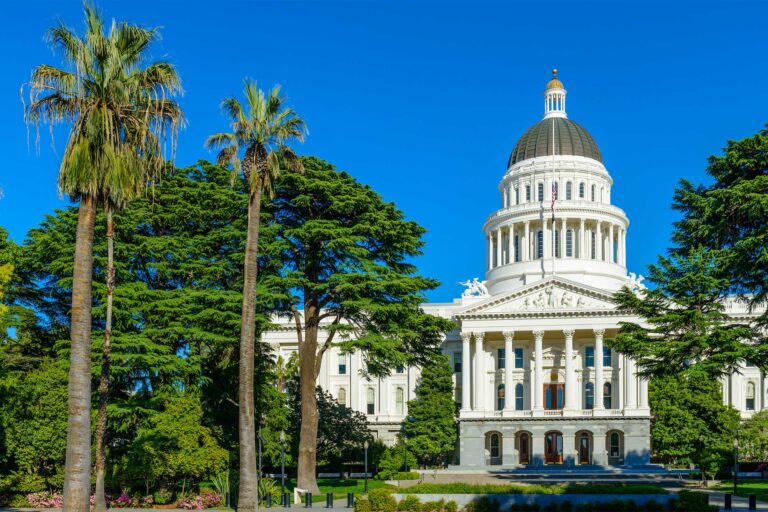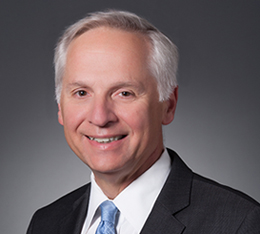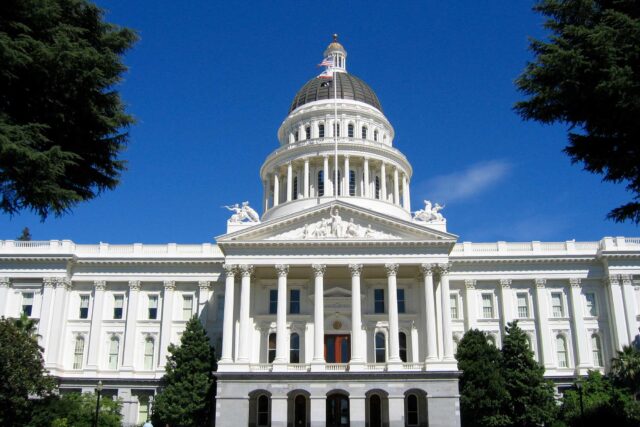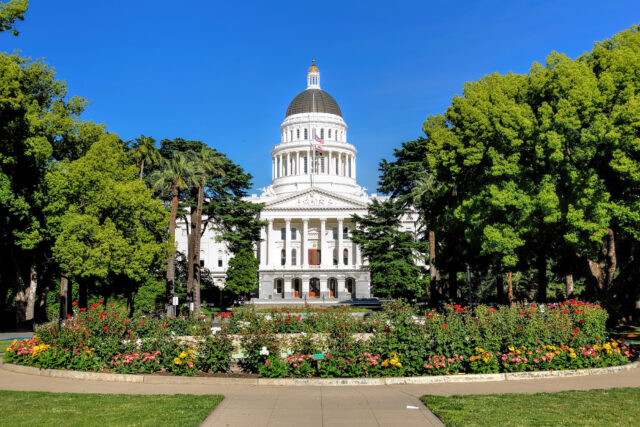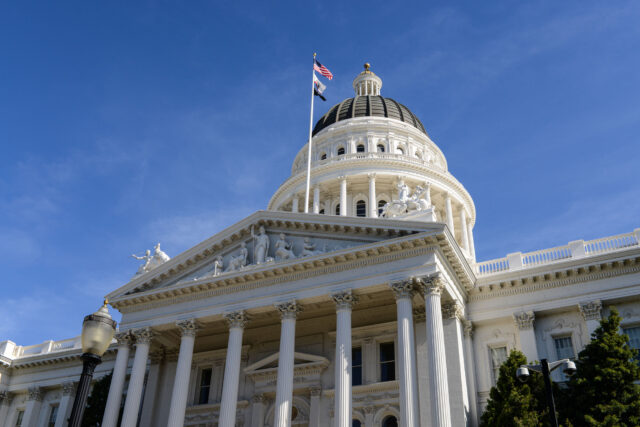(Spoiler alert—the July PPIC Statewide Survey does not include questions on removing the governor or supporting any of the replacement candidates. At the time the survey was conducted, the candidate list had not yet been finalized by the California Secretary of State, and a state court ruled that Governor Newsom could not be identified as a Democrat on the ballot. This post is about the election context, with a focus on voters’ continuing positive views of Governor Newsom and their generally negative attitudes about the recall process.)
Governor Newsom remains in a strong position to survive the September 14 recall election. In our latest reading of the political tea leaves, the July PPIC survey finds 56% of California likely voters approving of his handling of jobs and the economy, and 59% approve of his handling of environmental issues. Governor Newsom’s approval ratings for handling specific issues and his overall job approval have been consistently in positive territory throughout this year. Reflecting the impact of hyper-partisanship, Democrats and Republicans have widely varying views of their governor—giving Newsom the numerical advantage in this deep blue state.

What about the recall process itself? Our July survey finds that 86% of California likely voters say that it is a good thing that the California Constitution provides a way to recall the state’s elected officials, such as the governor. Californians are united in their support for the recall option across parties, regions, and demographic groups.
But attitudes toward the current recall effort tell a different story: 69% of California likely voters say that the special election to recall Governor Newsom is a waste of money. Voters are divided along party lines on this point, but not as divided as they were when asked about removing Newsom from office in the May PPIC survey.

What’s wrong with the recall, how should it be fixed, and how could these views impact voter turnout?
Despite strong approval of the recall option, it is noteworthy that two in three California likely voters say that the recall election process in California is in need of major or minor changes. Just one in three say that the recall process is basically fine the way it is. Majorities across regions of the state and demographic groups agree that change is needed to improve the recall process, while Democrats and Republicans are divided over how much change.

One popular potential change: defining the basis for holding a recall. Currently, an elected official may be recalled for any—or no—reason. Sixty percent of California likely voters support raising the bar so that an elected official could only be recalled because of illegal or unethical activity. Majorities across regions and demographic groups support this change. While partisans are divided, four in ten Republicans support this reform. The level of support for this change is similar to the share who wanted to keep Newsom in office in the March and May PPIC surveys.
Another possible reform with majority support is raising the signature requirement to 25% of the total votes cast in the previous election for that office. Currently, this requirement is set at 12%; that was 900,000 for the 2003 recall election and 1.5 million for the 2021 governor’s recall. Fifty-five percent would support the higher signature requirement, with about half or more in favor across regions and demographic groups. Democrats and Republicans are also divided on this change. Would there be a recall election on September 14 if the signature minimum had been over 3 million?
The reform idea that receives the strongest endorsement? Holding a runoff election between the top two replacement candidates if no candidate receives more than 50% of the vote. On this issue, 68% are in favor, as are a majority of Republicans, Democrats, and independents. Solid majorities across regions and demographic groups want this change. In the 2003 recall election, when 55% voted to remove Gray Davis, 49% voted for Arnold Schwarzenegger to replace him. This was on a ballot that included 135 candidates. If a majority vote to remove Newsom in September, one of the 46 replacement candidates would become the next governor—even if their supporters made up only a tiny sliver of all ballots cast on September 14.
Other reform ideas have been floated, such as changing the minimum signature requirements for becoming a replacement candidate, adding the lieutenant governor to the replacement ballot, and having recalls decided in the next regularly scheduled general election. In the end, any meaningful improvements in the recall process would require changing the California Constitution. After the September 14 election, creating a bipartisan commission that offers policy recommendations for California voters to consider on the November 2022 statewide ballot would be a worthwhile endeavor.
With ballots for September’s election arriving in mailboxes soon, the political wildcard is the relatively low level of enthusiasm for voting in the recall among Newsom supporters. Negative views of the recall process and the perception that the recall is a waste of money could also depress turnout—and a low turnout could undermine the election’s legitimacy no matter who wins. Let’s hope that Californians will rise to the occasion and cast their ballots in a critical year for the future of democracy.

